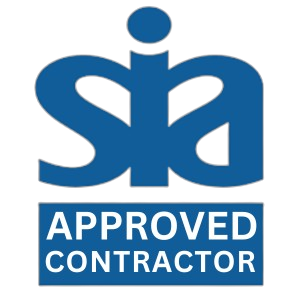Training Policy
Induction
Training It will provide each employee with an introduction to the Company, outlining their conditions of in employment, company procedures etc., This training will be additional to any /all other training provided.
Basic Job Training
It will be provided to all operational employees and will consist of a minimum two-day training period covering the core competency requirement for licensing as set down by the Security Industry Authority and in accordance with BS7499 and BS7984.
Specialist Training
Specialist training in subjects such as first aid and fire prevention delivered by the director, qualified staff or external trainers and developed in consultation with the client.
On –the-Job Training
The duration of the on-the-job training will be a minimum of one day, when the trainee will be supernumerary to the establishment. Only an officer or manager with experience will deliver training.
Annual Refresher Training
To cope with changes in methods, procedures, and legislation as required.
Equipment/Manual Handling
It is not in the scope of TSS staff to handle equipment or do manual work at Client Site. In case of such requirement case to case study will be carried out and appropriate training will be conducted through Client Company. Training records will be maintained to record in personnel files all training received by each employee. All supervisors will be responsible for recognizing the training needs of their subordinates and for bringing those needs to notice.
Standard Procedures
The following procedures and precautions will be ensured by Tragopan Security officer in relation to the following services.
Alarm Response
- Carefully attend the details of the alarm activation passed on by the control room operative. Ask questions if there are any uncertainties before proceeding to next step.
- Draw the corresponding keys from the locked safe (using the code) and the documents file from the locked cupboard.
- Pass a brief report to company and client control room.
- On reaching back make entries in all the relevant registers and make a brief entry in Occurrence Book.
Lock/Unlock
- Follow the assignment instructions and raise questions if there are any concerns.
- Carefully unset the keys/access equipment of the site and ensure after unlocking/locking the keys/access equipment is reinstated to its original spot.
- In case of the lockup, first proceed with a quick sweep of the building to ensure nothing peculiar is found and to prevent staff members getting stuck. Rest, the officer is to follow the AIs in terms of the locking and arming the site.
- In case of the unlocks, make sure there are no sign of break-ins or damage before unlocking the area; should the officer finds the sign of intrusion, standard protocol of informing Police and control room must be followed.
- Report to control room after completing the job and before leaving the site; only leave the site once an acknowledgement has been received from control.
Property Inspections
- Immediately notify the control room if any signs of trespassing, intrusion, leakage (water and gas), debris or asbestos are found on site.
- All utilities of the property are to be checked and if there is any malfunctioning, it needs to be escalated to the control room and from there to the property owner/manager.
- Report to control room after completing the job and before leaving the site; only leave the site once an acknowledgement has been received from control.
Mobile Patrols (Internal/External)
All patrols are to be carried out based on the client’s requirements. The officer must carefully go through the assignment instructions and must raise questions if there are concerns.
- All check points are to be visited and proof of presence to be recorded in the form of a time-stamped picture.
- If the site requires a magnetic tag such as a NFC tag, the officer must abide by the instructions.
Keys
These procedures lay down the steps to be taken when a new key holding site is handed over by a client.
Documents
Each keyholding site should have the following documents which are completed before/after the time of keys taking on.
Key Audit
These documents have the complete description of keys and handing/taking over signatures.
Site Survey
A representative from TSS will carry out the keyholding site survey with special emphasis on entry/exist procedures, setting up of alarm panels and H&S requirements.
Collection
Upon client’s email/call a date is scheduled when the officer is asked to visit the premises to collect the key. What’s imperative is to ensure the key collection is documented along with a key receipt.
Handover
Upon reaching termination of a contract, and as a settlement to return the keys/access assets, the officer is to meet as per client’s requirement and return the key. What’s imperative is to ensure the key handover is documented along with a key receipt.



